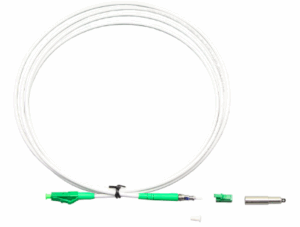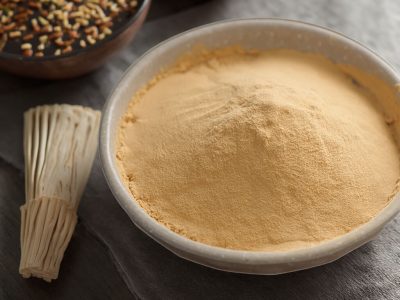How to Achieve Reliable Networks with FTTH Drop Patch Cords
Home » How to Achieve Reliable Networks with FTTH Drop Patch Cords
RECENT POSTS
Share:
- July 23, 2025
Table of Contents
In modern fiber optic networks, the reliability of your infrastructure depends heavily on the final connections delivered to end users. A high-quality FTTH Drop Patch Cord acts as the crucial link between service providers and customer premises. Selecting the right cord and installing it properly can significantly enhance performance, reduce maintenance needs, and ensure stable high-speed connectivity. This guide explores essential considerations and best practices for using FTTH Drop Patch Cords to build a dependable network.
The Role of FTTH Drop Patch Cord in Enhancing Network Reliability

The FTTH Drop Patch Cord is critical in maintaining the integrity of the fiber optic signal from the distribution point to the subscriber’s equipment.
- Signal Quality Assurance
Premium patch cords achieve insertion losses as low as 0.2–0.3 dB and return losses over 60 dB with APC connectors, ensuring minimal degradation during transmission. This performance supports bandwidth-demanding applications like 8K video streaming and cloud computing. - Durability in Varied Environments
FTTH Drop Patch Cords designed for outdoor use, compliant with IEC 60794, can resist crush forces up to 1000 N and perform reliably across a temperature range of –40°C to +85°C. - Compact and Bend-Insensitive Design
Modern FTTH Drop Patch Cords with G.657A2 fiber can tolerate bends down to 7.5 mm without significant signal loss, making them ideal for complex residential or commercial installations.
Choosing the Best FTTH Drop Patch Cord for Long-Term Performance
When selecting a patch cord, several factors directly impact long-term network reliability:
- Connector Performance and Compatibility
In high-density environments such as data centers, LC connectors offer superior space efficiency and support for large-scale fiber terminations. SC/APC connectors remain the standard for FTTH installations due to their low back reflection below –65 dB. High-precision zirconia ceramic ferrules maintain alignment even after 1000+ mating cycles. - Mechanical and Environmental Properties
FTTH Drop Patch Cords designed for outdoor use, compliant with IEC 60794, can resist crush forces up to 1000 N and perform reliably across a temperature range of –40°C to +85°C. - Standards and Certifications
Ensure the FTTH Drop Patch Cordcomplies with GR-326-CORE for connector strength, IEC 60332-1 for fire resistance, and RoHS for environmentally safe materials to achieve reliable installation and meet industry regulations.
Installation Best Practices for FTTH Drop Patch Cord
Proper installation safeguards the network against future faults and signal degradation. Before deploying a cord, connectors should be examined under a 200x microscope for contamination or damage. Cleaning with lint-free wipes and 99% isopropyl alcohol eliminates debris that can cause up to 1 dB additional loss.
During installation, avoid pulling forces above 100 N to prevent microbends or fractures. Always ensure the FTTH Drop Patch Cord is installed with a minimum bend radius of 7.5 mm to preserve optical performance and avoid excessive attenuation. Secure cables using trays or clips every 40 cm to prevent sagging, and always keep connectors capped until termination to block dust intrusion.
Testing FTTH Drop Patch Cord Installations for Reliable Performance
Post-installation testing is vital for verifying that the network meets expected performance levels. Technicians employ Optical Loss Test Sets (OLTS) to confirm that insertion loss remains below 0.3 dB and return loss exceeds 60 dB. Deviations often point to connector defects or improper handling during installation.
In addition, Optical Time-Domain Reflectometers (OTDR) trace the entire link for splices, bends, and breaks, while Visual Fault Locators (VFL) help detect physical issues such as sharp bends or fiber breaks through visible light. Together, these tests ensure the FTTH Drop Patch Cord is performing optimally under operational conditions.
Addressing Common FTTH Drop Patch Cord Installation Challenges
Despite using high-quality materials, common issues can compromise performance if left unchecked. Connector damage from improper handling often increases insertion loss and requires replacement.
Over-bending the patch cord beyond its rated minimum bend radius is another frequent cause of optical attenuation. To prevent this, the use of bend protectors or routing guides is highly recommended. Additionally, inadequate or incorrect labeling of cords often leads to connection errors and complicates troubleshooting. Implementing consistent labeling protocols and using bend protection accessories significantly reduces these risks and supports long-term network stability.
Conclusion
The reliability of a fiber optic network depends on more than just equipment—it begins with high-quality FTTH Drop Patch Cords and extends through proper selection, installation, and testing. By prioritizing durable materials, adhering to best practices, and addressing installation challenges proactively, network operators can deliver robust, high-speed services with minimal downtime. These measures not only protect the infrastructure investment but also enhance end-user satisfaction in increasingly demanding digital environments.
0


